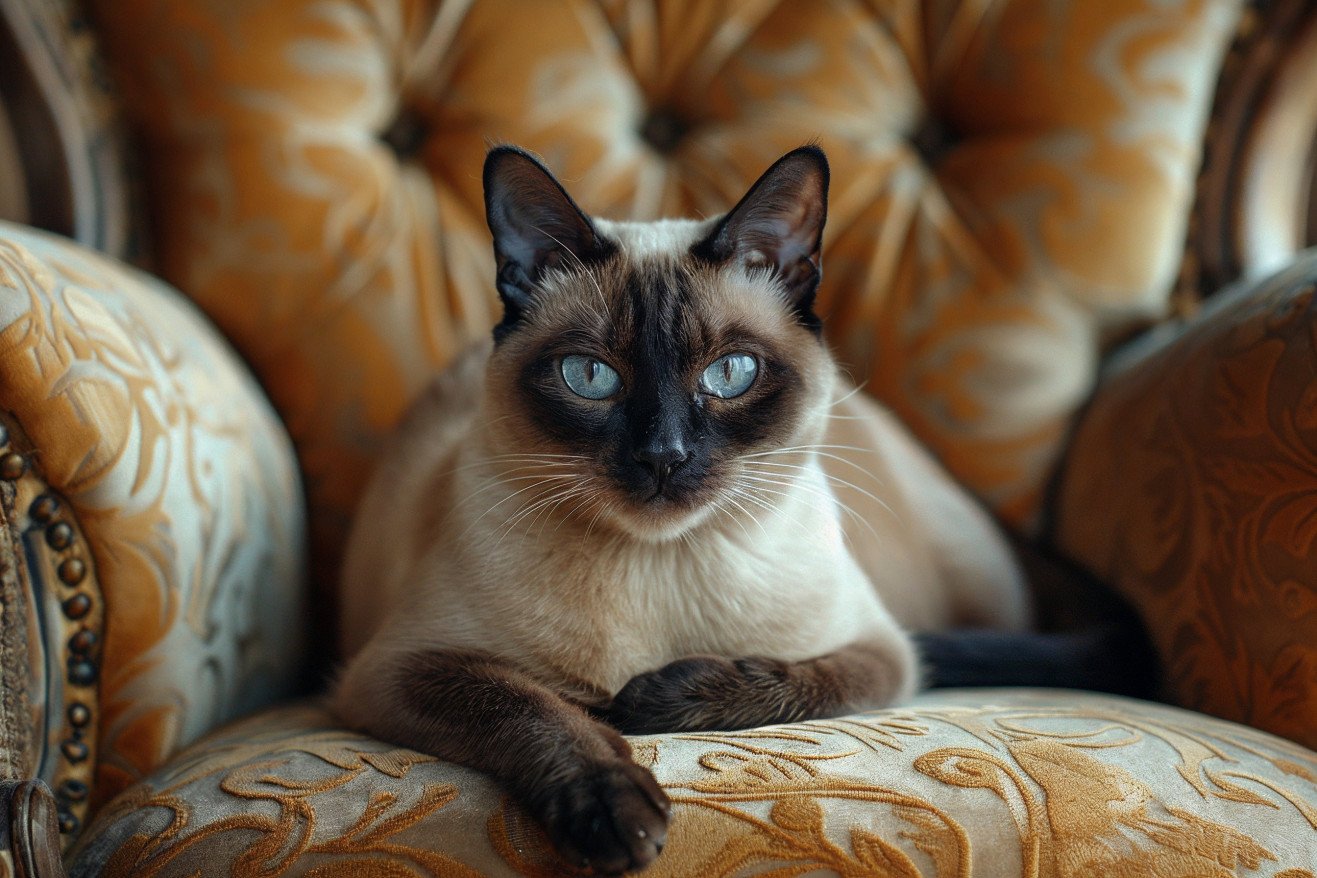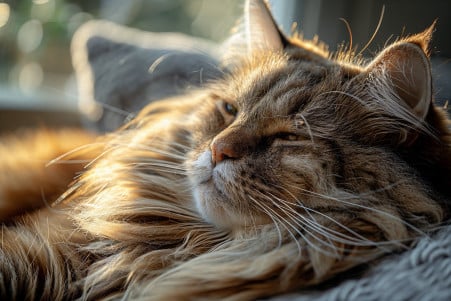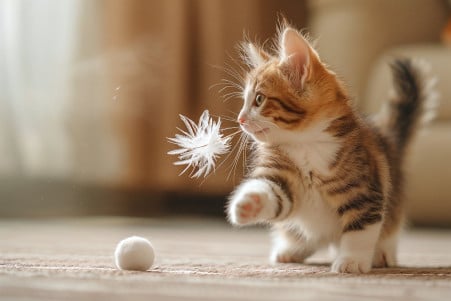The Oldest Cat Breeds: Genetics and Lifestyle Factors
4 June 2024 • Updated 4 June 2024

Although there are some cat breeds that are known for their long lives, which cat will live the longest on average, and what are the factors that contribute to their long life? The Siamese cat is one of the oldest cat breeds, living an average of 12-20 years due to their good health and slender, muscular bodies. A good diet, regular medical care, and a stimulating living environment can also help ensure that these elegant, friendly cats live a long life.
We will explore research in genetics, evolutionary biology, and veterinary medicine to find out what specific traits and living situations have enabled certain breeds to live well into their late teens and early 20s. You will learn about the best diets, grooming requirements, activity levels, and other lifestyle factors that can help ensure your cat lives as long and healthy a life as possible.
What is the longest living cat breed?
Genetic Factors: Breed-Specific Traits and Longevity
Genetic factors and selective breeding have led to a wide range of life expectancies among different cat breeds. For example, the Siamese, Balinese, Burmese, Ragdoll, and Russian Blue are among the breeds that tend to live the longest, often surviving anywhere from 15 to 25 years. Their lean, muscular bodies and general good health are among the reasons these cats live so long, according to research.
On the other hand, some purebred cats are more likely to suffer from genetic conditions that can shorten their lives. For example, Persians are known to have trouble breathing, dental problems, and eye conditions due to their brachycephalic skulls. Ragdolls are prone to heart disease and kidney disease. This is why it’s so important to breed cats responsibly and prioritize genetic diversity, according to research from Cornell.
While purebred cats have their benefits, mixed-breed cats may have a better chance of living longer due to the fact that they have a more diverse gene pool, according to experts. In the end, genetics are a big part of how long a cat can be expected to live, but good care is also important to ensure a cat can live well into its late teens or even its twenties.
Environmental Influences: Indoor vs. Outdoor Lifestyles and Preventive Care
As reported by The Spruce Pets, the difference in life expectancy between indoor and outdoor cats is staggering, with indoor cats living significantly longer. Outdoor cats are at a much higher risk of accidents, disease, and other animals and vehicles that can lead to a life expectancy of 2-5 years.
This makes the case for keeping cats indoors or in a safe, enclosed outdoor environment even stronger. Grass Valley Vets explains that indoor-only cats can expect to live 12-18 years, while outdoor cats can only expect to live 2-5 years.
In addition to a safe indoor environment, preventive care is a key factor in a cat's life expectancy. Regular veterinary checkups, vaccinations, parasite control, and spaying/neutering are all important factors according to the UC Davis School of Veterinary Medicine. By providing a safe, enriching indoor environment and ensuring preventive care, cat owners can help their pets live long, healthy lives well into their late teens and early twenties.
Optimal Nutrition: What to Feed Your Cat for a Long Life
Of course, one of the most important factors in your cat's overall health and longevity is proper nutrition. Purina explains that feeding your cat a high-quality, nutritionally complete diet that meets their specific needs is key. And, as your cat ages from a kitten to a senior, their nutritional needs will change.
The ASPCA says that treats should make up no more than 5-10% of a cat's daily caloric intake if you want to ensure they maintain a healthy weight. Dr. Barry Kellogg of the Humane Society Veterinary Medical Association explains that "good premium commercial foods are the safest and best way to design a feeding program" for cats. However, he adds that it may be possible to create a balanced homemade diet for cats with special needs under the guidance of a veterinarian.
It's also important to control portion sizes and keep your cat at a healthy weight, as the ASPCA points out, since obesity can lead to a variety of health problems that can reduce a cat's life expectancy. Plus, it's important to make sure your cat is getting enough water, as Shawn Simons of Kitty Bungalow Charm School explains that a water fountain can help ensure your cat is drinking enough. By making sure your cat is eating a nutritionally complete diet, controlling portion sizes, and making sure they're getting enough water, you can help ensure that your cat lives a long, healthy life.
Enrichment and Activity: Physical and Mental Stimulation
Physical and mental stimulation are important for a cat's well-being at any age. In fact, PetMD notes that environmental enrichment and mental stimulation can help prevent boredom and stress, both of which can shorten a cat's life.
Cedarcide suggests that indoor cats benefit from interactive toys, puzzles, and other activities that promote physical and mental stimulation. Regular exercise and playtime not only help cats maintain a healthy weight but also ensure they stay fit and active, which can help prevent obesity-related health problems.
As cats get older, their activity levels and other needs change. According to Cornell University, it's important to adjust a cat's environment and activities to accommodate the physical and cognitive changes that come with aging. For example, providing vertical spaces, cat trees, and scratching posts can help older cats stay active and engaged.
In general, a stimulating, enriched environment that's tailored to a cat's changing needs at every stage of life can help ensure a cat's well-being and quality of life as they age.
Preventative Medicine and Early Intervention: How to Help Your Cat Live Longer
Regular veterinary visits and preventative medicine are important for catching and treating potential health concerns early, which can have a big impact on a cat's life expectancy. The Cornell University College of Veterinary Medicine says that cats should see the vet more frequently as they get older, even if they seem healthy. They recommend checkups every 6 months for cats between the ages of 10 and 15 and every 4 months for cats over the age of 15.
Vaccinations and parasite prevention are also important. The ASPCA says that "core vaccines are always recommended" since they protect cats from diseases that are highly contagious and can be deadly. Regular dental care, including cleanings and extractions if necessary, is important to prevent periodontal disease, which can lead to other health issues and shorten a cat's life.
As cats get older, they are more likely to develop conditions like arthritis, kidney disease, and cognitive dysfunction. Medriva explains that it's important to catch and manage these age-related issues early. That's why it's important to keep an eye on a cat's general well-being, including any changes in behavior, appetite, and litter box use, so that you can catch any potential problems early. By making sure to take your cat in for regular checkups and addressing any health issues as soon as they arise, you can help ensure that your cat lives as long as possible.
Conclusion: A Holistic View of Cat Longevity
Cat longevity is the result of a holistic approach that takes into account a cat's genetics, environment, nutrition, and preventive care from kittenhood through old age. Factors that contribute to longer lifespans include choosing healthy breeds, keeping cats indoors, feeding them a nutritious diet, providing physical and mental stimulation, and making sure they get regular veterinary care and treatment.
Good pet parenting is also important, as cats need their owners to prioritize their physical, mental, and emotional health. By doing so, cat owners can help their pets live long, healthy, and happy lives well into their late teens and early twenties. In the end, a holistic view of cat health and wellness is the best way to ensure that your cat lives as long as possible.


